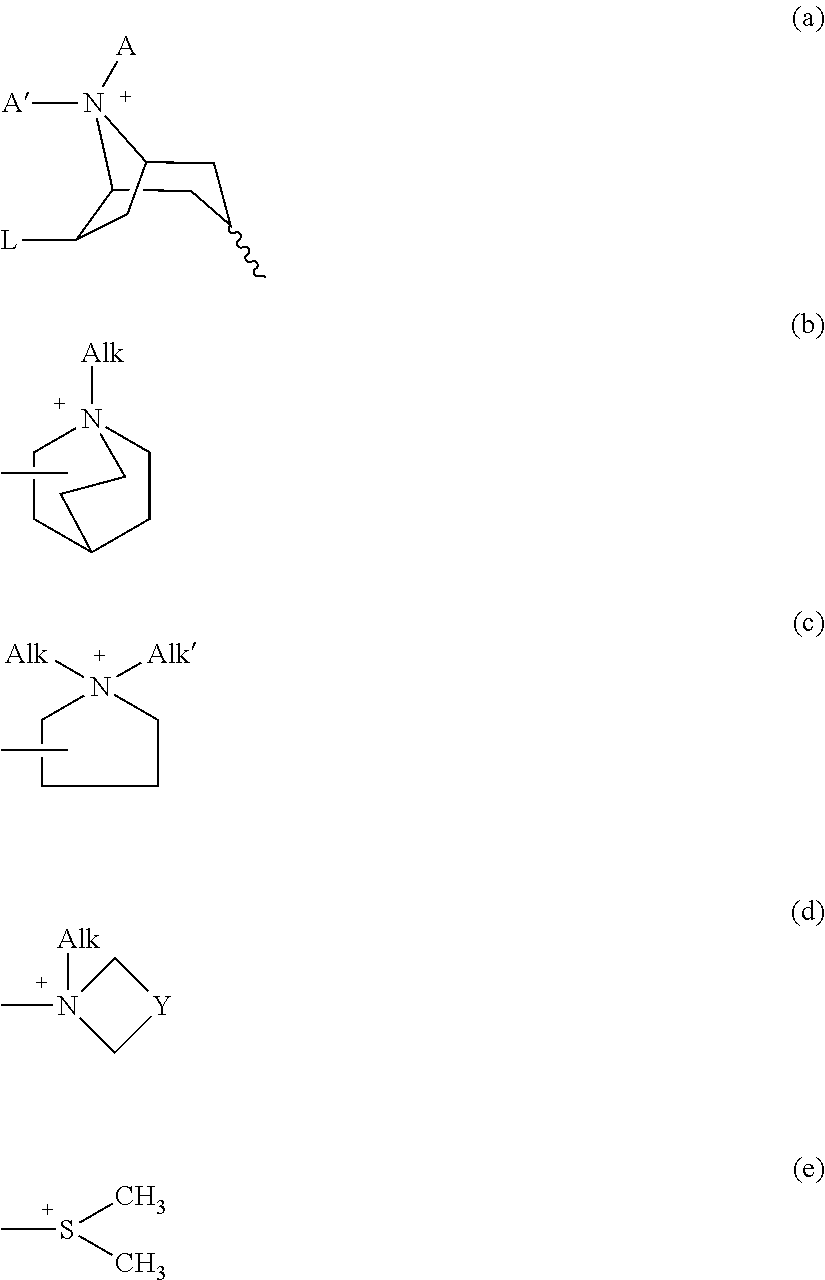Muscarinic combinations and their use for combating hypocholinergic disorders of the central nervous system
a central nervous system and hypocholinergic technology, applied in the field of treatment of hypocholinergic disorders of the central nervous system, can solve the problems of limited size, limited success of achei, and none of the available acheis offers more than modest clinical benefits for patients, so as to achieve safe activation of acetylcholine receptors, neutralize adverse effects, and increase the concentration of acetylcholine
- Summary
- Abstract
- Description
- Claims
- Application Information
AI Technical Summary
Benefits of technology
Problems solved by technology
Method used
Image
Examples
example 1
[0782]Study 1 Establishment of the Dose-Response to Xanomeline In a Mouse Model of Diarrhea.
[0783]Male Swiss mice (4-6 weeks old), N=10 per treatment group were used, and treated intra-peritoneally (i.p.) with either vehicle (vehicle group) or increasing doses of xanomeline, a representative muscarinic agonist. Mice were randomly assigned to one of two experimental groups (vehicle; or increasing doses of xanomeline). Each animal was identified by its group name, cage number, series (day) of experiment, and number (1 to 10) written with permanent ink on the tail.
[0784]Mice were placed individually in cages without any bedding materials. During the experiment the number of fecal pellets were counted at different time-points, starting one hour before the time of the administration of the test compound (T0), as outlined below:
[0785]T-1 h to T0: counting of the accumulated fecal pellets excreted.
[0786]T0: administration of the test compound.
[0787]T0 to T+2 h: counting of the accumulated ...
example 2
[0800]Evaluation of Cognition with Oxybutynin and Xanomeline in the T-Maze Alternation Task in Mice
[0801]The T-maze continuous alternation task (T-CAT) is useful as model for studying compounds with cognitive enhancing properties. The T-maze consists of 2 choice arms and 1 start arm mounted to a square center. Manual doors are provided to close specific arms during the force choice alternation task.
[0802]Male Swiss mice (4-6 weeks old), N=10 per treatment group were used, and were pre-treated with:[0803]Oxybutynin at the dose that blocked fecal pellet excretion in Study 2 of Example 1. Thirty minutes later mice were treated with either vehicle or one of 4 doses of xanomeline:[0804]the highest dose that did not cause diarrhea;[0805]a dose that caused diarrhea.
[0806]Mice were randomly assigned to one of the different experimental treatment groups. Each animal was identified by its group name, cage number, series (day) of experiment, and number (1 to 10) written with permanent ink on t...
PUM
 Login to View More
Login to View More Abstract
Description
Claims
Application Information
 Login to View More
Login to View More - R&D
- Intellectual Property
- Life Sciences
- Materials
- Tech Scout
- Unparalleled Data Quality
- Higher Quality Content
- 60% Fewer Hallucinations
Browse by: Latest US Patents, China's latest patents, Technical Efficacy Thesaurus, Application Domain, Technology Topic, Popular Technical Reports.
© 2025 PatSnap. All rights reserved.Legal|Privacy policy|Modern Slavery Act Transparency Statement|Sitemap|About US| Contact US: help@patsnap.com



